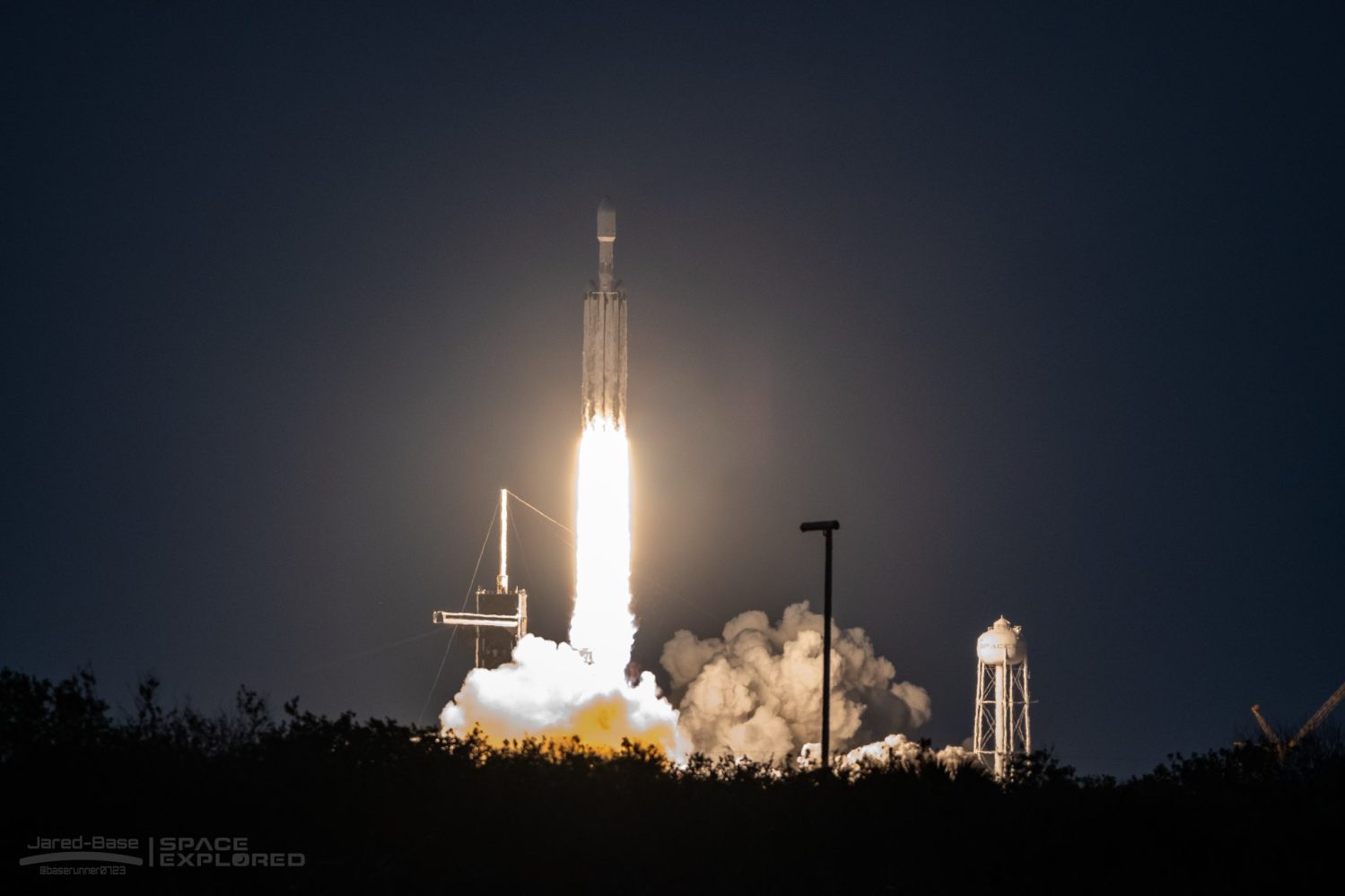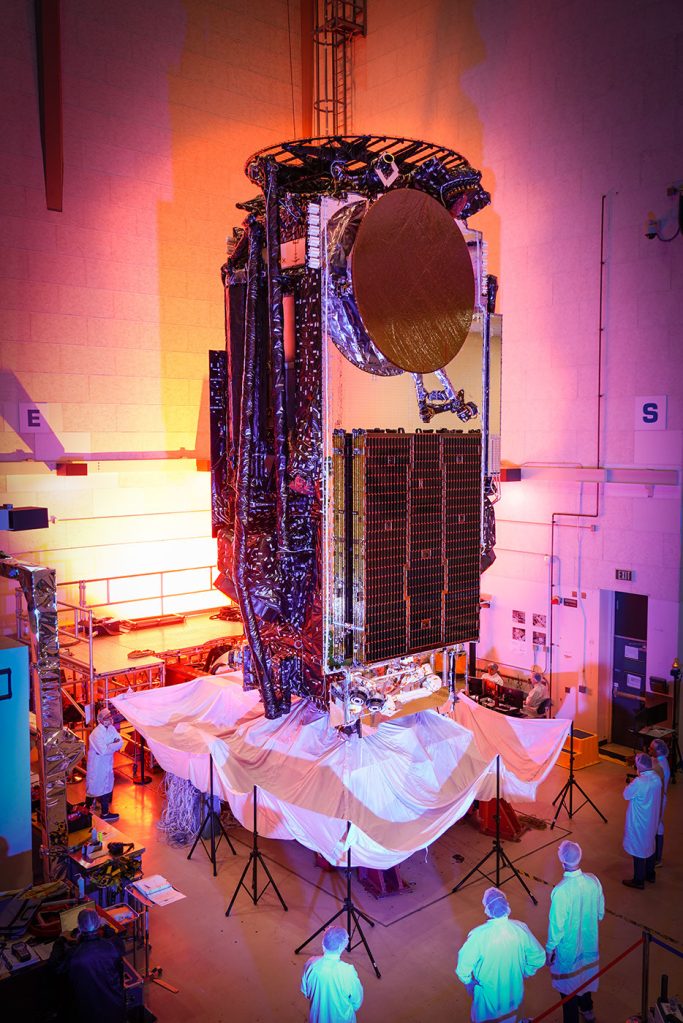
Hughes Network Systems is poised to reshape global connectivity with the launch of Jupiter 3, also called EchoStar 24 on a Falcon Heavy rocket later tonight.
Liftoff atop SpaceX’s Falcon Heavy is scheduled to take place as early as Wednesday night, July 26, from Launch Complex 39A at NASA’s Kennedy Space Center in Florida, with a launch window that opens at 11:04 P.M. ET.
At around 20,300 pounds (9,200 kilograms), Jupiter 3 will be the heaviest geostationary satellite launched to date. SpaceX’s tri-core Falcon Heavy is expected to place the vehicle into a geostationary transfer orbit. The spacecraft’s onboard propulsion systems are expected to then circularize its orbit to 22,236 miles (35,786 kilometers) above the equator over the Americas in the weeks and months after liftoff.
About eight minutes after launch, the Falcon Heavy’s two side boosters are slated to return to Cape Canaveral Space Force Station’s Landing Zones 1 and 2. The center core will be expended.
Jupiter 3 represents cutting-edge satellite technology, utilizing unique features that set it apart from its predecessors. Hughes Network Systems, which is a subsidiary of EchoStar, chose SSL, now part of Maxar Technologies, to build this “Ultra High Density Satellite” because of these features, with an intent to redefine communication capabilities across North and South America.

Powered by the SSL-1300 satellite bus, Jupiter 3 boasts a multi-spot Ka-band architecture, enabling it to accommodate multiple data streams simultaneously. With its two deployable solar arrays and batteries, the satellite is set to deliver connectivity and data speeds up to 100 Mbps for users in the region over a 15-year lifespan once positioned in geostationary orbit, the company said.
Hughes Network Systems is recognized within the industry by most as a trailblazer in satellite technology and connectivity with an illustrious history of engineering innovations from its pioneering work on the two-way Very Small Aperture Terminal in the 1980s to the introduction of satellite internet in the 1990s.
The company said Jupiter 3’s capacity to double the size of the entire Hughes Jupiter high-throughput satellite fleet demonstrates its commitment to bridging connectivity gaps, particularly in rural areas, and serving an expanding customer base across the Americas.
The launch of Jupiter 3 is anticipated to unlock a host of opportunities, including in-flight Wi-Fi, maritime connections, enterprise networks, backhaul for mobile network operators, and community Wi-Fi solutions. Satellite internet connectivity is also expected to receive a significant boost, empowering individuals and businesses alike.
“As the leading provider of satellite internet to rural customers across the Americas, we are proud to begin a new era of connectivity with the launch of Jupiter 3,” Hamid Akhavan, the CEO of EchoStar, said in a June 30 company statement. “Doubling the capacity of our satellite fleet with an additional 500 Gbps, Jupiter 3 will enable us to serve more customers, especially where cable and fiber can’t, so they can do everything they want – including work at home, study online, play games, engage in their communities, and stay in touch with family and friends.”
FTC: We use income earning auto affiliate links. More.

Comments